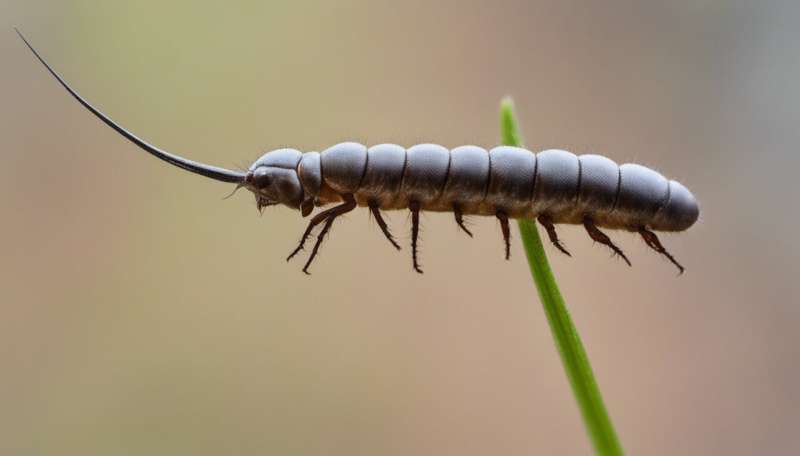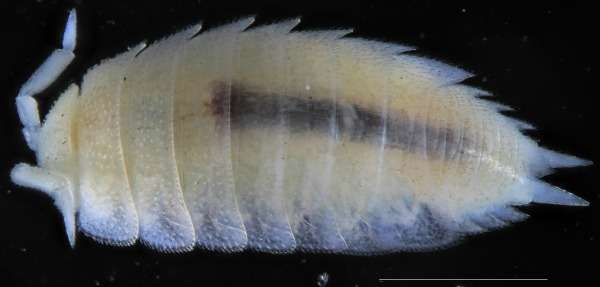Weird woodlice guzzle water with their antennae

Ever come across a slater, woodlouse or pill bug tucked under a rock in your garden? These tiny creatures and others like them hide in the moist earth under rocks and logs to avoid drying out.
Travel deeper beneath the earth to the subterranean voids above the water table in groundwater aquifers of WA's Yilgarn region, and scientists have discovered a new family of slaters (Paraplatyarthridae), which have evolved a novel approach to staying moist.
These slaters have evolved a special water transport system to circulate fluids, including water, on the surface of their body. But how?
All terrestrial slaters have developed a type of water transport system, University of Adelaide PhD research scientist Mohammad Javidkar says.
This enables them to funnel fluid through interconnected channels of scale rows on the underside of the body to the glands in the head and into the abdomen, where the respiratory system occurs.
Like other terrestrial isopods, the newly discovered two-to-four-millimetre-long creatures, now named paraplatyarthid slaters, use this water transfer system to keep their respiratory systems moist.
But, unlike other terrestrial isopods, this group uses a unique structure in their antennae to enhance their water transport systems and keep their lung-like organs functioning.

Dr Javidkar's research revealed these particular slaters have evolved a specific structure in their antenna to channel the water.
First they simply dip their antennae into droplets of water. The water then travels down a furrow in the antenna, which includes elongated hair-like structures acting as capillary hairs.
This furrow feeds the water to the slaters' head, from where it travels through interconnected channels to their lung-like organs.
This antennal structure, as well as leaf-like scales with an unknown function on the underside of antennae, has never been recorded before.
Before this study, scientists assumed the species was part of another genus, Trichorhina.
But, after molecular analyses using DNA experiments, Dr Javidkar and Professor Andrew Austin's research group realised they were a whole new group of terrestrial slaters.
Further research revealed this family has a wider distribution, from subterranean and terrestrial environments in WA to subtropical South America.
Who knew such oddities occurred deep beneath the earth?
Provided by Science Network WA
This article first appeared on ScienceNetwork Western Australia a science news website based at Scitech.














